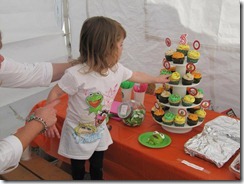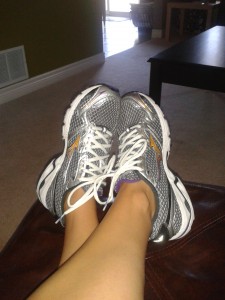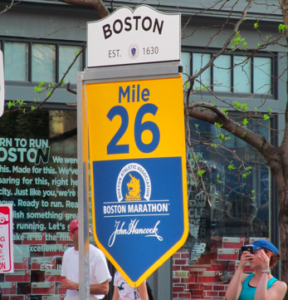Root and Rock and Stump…Oh My !!!
I love this time of year because it’s the perfect time to get out on the trails for a view of the fall colours. Now the kind of trials I am speaking of are not the conformist trails that have been man made by some city planners, ( having said that, I must say that Ottawa has an awesome city centered trial system ). What I am talking about is going “off road” in a big way.
I recently completed the inaugural run of “Chase the Coyote” sponsored by our local running community. It was a trail run staged at Mono Cliffs Provincial Park, with proceeds going to the Dufferin Hi-Land Bruce Trail club to assist with trail maintenance and improvement. Over 200 runners completed various distances from a 5k sprint to a challenging 14k loop. Some of the features of this course included cliffside trails, roller coaster single track, fast double track, switchbacks, slopes, and stairs…and an awesome view including the wonderful colours of fall.

I have been running trails for a number of years, and find it a nice break from the flat pavement of a road race. Trail running can really help your training too because the uneven terrain forces you to use different muscle groups, and helps with balance and mental focus.
Having said that, common sense and a respect for your situation is strongly urged. Trail running can be a wonderful experience but …the potential for injury or other difficulties is increased exponentially. I repeat …THE POTENTIAL FOR INJURY OR OTHER DIFFICULTIES IS INCREASED EXPONENTIALLY !!!
If you are new to the whole concept of taking your runs “off road” then there are a number of things to consider, as well as some rules to live by …literally.
- Never, Never, Never, Never run alone… there is the potential for injury and the unexpected…it’s always better to have others to help you should you roll and ankle or take a tumble. Always try and run with an organized trail running group.
- Start out small, and I do mean baby steps, before you invest in a pair of “ATV” style trail shoes, try a few short runs on a trail to see if it’s for you. Contact your local running store for a trail running clinic.
- Stick to well marked trails, conservation trails, or trails maintained and monitored by a park or trail association.
- Walk your course first, making sure you get a good look at the lay of the land, the roots, the rocks, the cliffs, and any other technical element of the trail.
- Please see item number 1.
- Once you know the sport is for you, invest in a good pair of trail shoes. Trail shoes offer better support and tread for the trail … and are also a good option for winter running. Your local running store can find the right shoe for you…and the matching left one too.
- Take a map and a camera, not all GPS devices work as well in the woods due to canopy cover and trees. Make a note of your course, and pick obvious land marks so you don’t get lost. Take lots of pictures.
- Never listen to music while you are running the trails. You will want to hear the birds singing, the the beaver splashing in the pond, and more importantly the bigger angry, curious, or hungry wildlife that may be around.
- Never approach wildlife, especially momma and baby… they will go to the limit to protect their young from a perceived threat ( namely… you ) and understandably so.
- If you get lost…don’t panic…stop and get your bearings…if all else fails, double back the way you came in.
- Take everything you need with you…including water, gels, a small first aid kit, cell phone, ( although not always reliable depending on the region ). Respect the trail and it’s beauty, do not leave any gel packs, water bottles, or garbage behind. Do no harm.
- Dress in bright colours, you don’t want to blend in, especially during hunting season…’nuf said.
- If in doubt, please see item number 1.
- Be alert at all times, you may be sharing the trail with hikers, mountain bikers, and other trial runners…as well as the locals…aka wildlife.
- Physical or mental fatigue are your worst enemies…stay alert at all times.
- Run during daylight hours…you really want to see the trail…and the roots and stumps and anything else that could cause you to stumble or tumble.
- Be prepared to offer assistance to anyone on the trail who may be in distress or injured…if it were you on the ground would you just want people to run past you…didn’t think so.
- If you are registered for a big road race, I would recommend you not run the trails until after your big event…it would really suck if you have been training for months for a road race and have to pull out due to an injury on the trail…trust me…I’ve been there.
- Adjust your stride / gate / cadence to the terrain… lifting your knees and focusing on a solid mid foot strike… make sure you are not dragging your feet, clear obstacles with room to spare. Swing your arms…your legs will follow.
- Ya’ don’t forget item number 1.

Trail running is awesome…BUT…and I do mean BUT… trail running is mentally and physically challenging, and requires your full attention to the trail and your footing…take walking breaks, gather your focus on the trail and terrain. You are not going to run a trail to set a PB, but to embrace the challenge and be one with the woods ( figuratively speaking ). It’s easy to get in the zone, and I mean the danger zone…roots, stumps, mud, rocks, and cliffs are all potential trip hazards. Keep a clear head and watch your footing. Animals, and other potential hazards are abound…NEVER RUN ALONE.










 Our Magazine
Our Magazine
